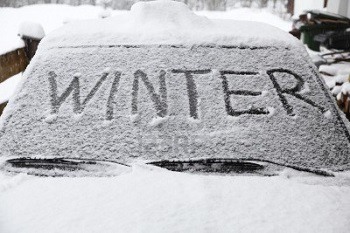Freezing Temperatures? 6 Tips To Help Protect Your Vehicle
Posted on February 2, 2017

1. Check the antifreeze (coolant)
The engine cooling system should be filled with a 50/50 mixture of antifreeze and distilled water to prevent freezing and boiling over. Keep the cooling system operating at peak performance by following the manufacturer’s recommendations for changing the antifreeze (flush and fill). In addition to changing the antifreeze, pressure testing the cooling system on an older vehicle may expose a minor leak before it becomes a major problem. Antifreeze testers are available at your local auto-parts store to test the mixture, and most repair shops charge a minimal fee for pressure testing – some shops will do it for free.
2. Change the engine oil
Be rigorous about changing your car’s fluids and filters during the winter months. Your car’s older engine will thank you for it! Remember to change the oil and oil filter every 3,000 to 5,000 miles. Use the recommended oil viscosity range for winter. 5W-30 motor oil flows quicker in cold weather than 20W-50. Most vehicle manufacturers recommend 5W-30 oil for year-round protection.
3. Check the tires
Maintaining your tires during the winter is crucial. Remember, there’s a very good chance another set of tires is needed if your vehicle has reached the 80,000 to 90,000 mile mark. Tires that are unevenly worn or out of balance can cause a car to pull or shake when driven, potentially damaging other components. Rotate and balance your tires every other oil change; regularly check for uneven wear and try to keep them clean. Tires should be properly inflated, and the tread depth should be at least 4/32”. Using snow tires can improve traction over all-season tires. Also, since you may not have used four-wheel drive all year, or in several years, make sure the 4WD is activated when you switch it on (review your manual on “how to activate”). Using 4WD improves traction in slippery conditions.
4. Check the battery
Cold temperatures can reduce the battery’s power. If your car’s battery is older than four years, it may be time to replace it. Check the battery cables, tray, and hold-down brackets for corrosion – a common problem on older vehicles.
5. Check the belts and hoses
If your vehicle has a timing belt, it’s very important to replace it at the recommended interval (60,000 miles or more). Cold weather can reduce the life expectancy of belts and hoses, so make sure yours are in good shape before getting on the road. A stretched timing belt affects engine performance, and a broken belt can leave you stranded. If you have an interference engine, a broken belt will also cause engine damage! Check your vehicle owner’s manual to determine when the timing belt should be replaced, and contact the manufacturer to see if your vehicle has an interference engine (most cars on the road today have a non-interference engine). Always make sure you replace your timing belt in accordance with manufacturer’s instructions.
6. Change your driving habits
Cars that are driven easy last longer, so take it easy on winter roads. To prevent component wear and possible damage in very cold temperatures, warm up your car by driving it slowly to start. This will help the engine, transmission, and other drive-line components warm up with less stress. Avoid fast driving in general, hitting curbs, off-roading, and trailer-towing as these can put unnecessary strain on your vehicle. Slow down and increase your following distance when driving in harsh weather. All vehicles lose traction in rain, snow, and ice.
Blog Archives
- January 2020
- December 2019
- November 2019
- October 2019
- September 2019
- August 2019
- July 2019
- June 2019
- May 2019
- April 2019
- March 2019
- January 2019
- December 2018
- September 2018
- July 2018
- May 2018
- April 2018
- January 2018
- December 2017
- November 2017
- October 2017
- August 2017
- June 2017
- March 2017
- February 2017
- January 2017
- December 2016
- November 2016
- September 2016
- August 2016
- July 2016
- January 2016
- November 2015
- October 2015
- January 2015
- October 2014
- September 2014
- August 2014